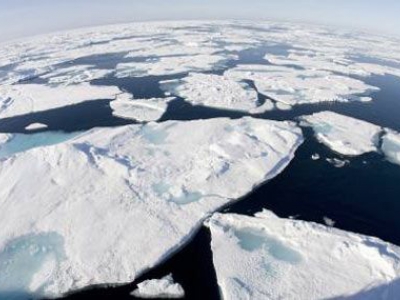NOAA new report finds that the Arctic continues to show evidence of a shift to change
According to a new report released by NOAA and its partners, cooler temperatures in the summer of 2013 across the central Arctic Ocean, Greenland and northern Canada moderated the record sea ice loss and extensive melting that the surface of the Greenland ice sheet experienced last year. Yet there continued to be regional extremes, including record low May snow cover in Eurasia and record high summer temperatures in Alaska.

June-August 2013 temperature compared to the 2007- 2012 average. Map by NOAA Climate.gov, based on NCEP Reanalysis data from NOAA ESRL Physical Sciences Division / Image Credit: NOAA
“The Arctic caught a bit of a break in 2013 from the recent string of record-breaking warmth and ice melt of the last decade,” said David M. Kennedy, NOAA’s deputy under secretary for operations, during a press briefing today at the American Geophysical Union annual meeting in San Francisco. “But the relatively cool year in some parts of the Arctic does little to offset the long-term trend of the last 30 years: the Arctic is warming rapidly, becoming greener and experiencing a variety of changes, affecting people, the physical environment, and marine and land ecosystems.”
Major findings of this year’s report include:
- Air temperatures: While Eurasia had spring air temperatures as much as 7F above normal, central Alaska experienced its coldest April since 1924 with birch and aspen trees budding the latest (26 May) since observations began in 1972. Summer across a broad swath of the Arctic was cooler than the previous six summers, when there had been pronounced retreat of sea ice. But Fairbanks, just below the Arctic Circle in Alaska, experienced a record 36 days with temperatures at or exceeding 80F.
- Snow cover: The snow extent in May and June across the Northern Hemisphere (when snow is mainly located over the Arctic) was below average in 2013. The North American snow cover during this period was the fourth lowest on record. A new record low was reached in May over Eurasia
- Sea ice: Despite a relatively cool summer over the Arctic Ocean, the extent of sea ice in September 2013 was the sixth lowest since observations began in 1979. The seven lowest recorded sea ice extents have occurred in the last seven years.
- Ocean temperature and salinity: Sea surface temperatures in August were as much as 7F higher than the long-term average of 1982-2006 in the Barents and Kara Seas, which can be attributed to an early retreat of sea ice cover and increased solar heating. Twenty-five percent more heat and freshwater is stored in the Beaufort Gyre, a clockwise ocean current circulating north of Alaska and Canada, since the 1970s.
- Greenland ice sheet: During a summer when air temperatures were near the long-term average, melting occurred across as much as 44 percent of the surface of the Greenland ice sheet, close to the long-term average but much smaller than the record 97 percent in 2012.
- Vegetation: The Arctic is greening as vegetation responds to warmer conditions and a longer growing season. Since observations began in 1982, Arctic-wide tundra vegetation productivity (greenness) has increased, with the growing season length increasing by 9 days each decade.
- Wildlife: Large land mammal populations continued trends seen over the last several decades. Muskox numbers have increased since the 1970s, in part due to conservation and introduction efforts, while caribou and reindeer herds continue to have unusually low numbers
|
In 2006, NOAA’s Climate Program Office introduced the State of the Arctic Report which established a baseline of conditions at the beginning of the 21st century. It is updated annually as the Arctic Report Card to document the often-quickly changing conditions in the Arctic. To view this year’s report, visithttp://www.arctic.noaa.gov/reportcard/.
You may find full analysis and relevant photos of this environmental change trend that persists in the Arctic at the NOAA website































































